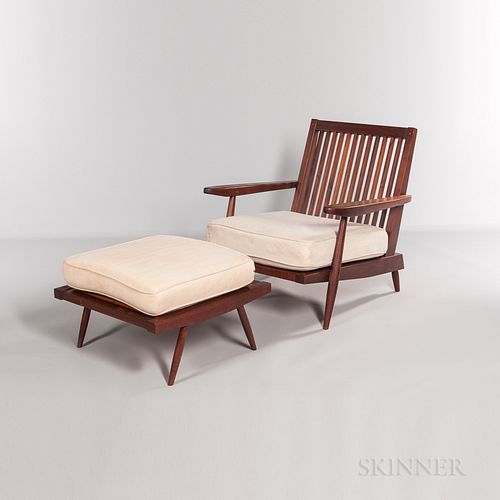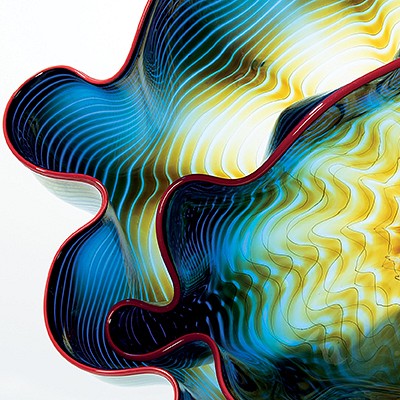George Nakashima (1905-1990) "Cushion" Armchair and Ottoman
Lot 1224
About Seller
Bonhams Skinner
274 Cedar Hill Street
Marlborough, MA 01752
United States
Founded over four decades ago, Bonhams Skinner offers more than 60 auctions annually. Bonhams Skinner auctions reach an international audience and showcase the unique, rare, and beautiful in dozens of categories, including the fine and decorative arts, jewelry, modern design, musical instruments, sc...Read more
Categories
About Auction
Catalog Only
By Bonhams Skinner
Jun 17, 2020 - Jun 29, 2020
Set Reminder
2020-06-17 12:00:00
2020-06-29 19:00:00
America/New_York
Bidsquare
Bidsquare : 20th Century Design
https://www.bidsquare.com/auctions/skinner/20th-century-design-5265
This sale offers over 700 lots for the discerning collector, dealer and home owner seeking furniture, art work and decorative objects spanning the 20th and early 21st centuries Bonhams Skinner bidsquare@bonhamsskinner.com
This sale offers over 700 lots for the discerning collector, dealer and home owner seeking furniture, art work and decorative objects spanning the 20th and early 21st centuries Bonhams Skinner bidsquare@bonhamsskinner.com
- Lot Description
George Nakashima (1905-1990) "Cushion" Armchair and Ottoman, New Hope, Pennsylvania, 1964, black walnut and Kilkenny Bergamo upholstery, with copies of original order cards, ht. 30 1/2, 16, wd. 30 1/2, 24 1/8, dp. 34, 24 in.
Provenance: The estate of Dr. Bernard S. Aaronson; Skinner, Inc., June 2019. Dr. Aaronson was the head of the Section of Experimental Psychology, Bureau of Research in Neurology and Psychiatry, Princeton University. He was a well-known investigator in the field of consciousness expansion and purportedly participated in the CIA's MK ULTRA LSD experiments in the 1960s.
Note: George Nakashima was an American woodworker, architect, and furniture maker who was one of the leading innovators of 20th century furniture design and a father of the American craft movement. Of Japanese descent, George Nakashima was born in Spokane, Washington, in 1905. He studied Forestry and Architecture at the University of Washington, attended the Ecole Americaine des Beaux-Arts at Fontainebleau, and earned his Masters in Architecture from Massachusetts Institute of Technology in 1929. Like others of Japanese ancestry, he was interned at a camp during WWII where he met Gentaro Hikogawa, a traditional Japanese carpenter. Under his tutelage, Nakashima learned to master traditional Japanese hand tools and joinery techniques.
In 1943, Antonin Raymond successfully sponsored Nakashima's release from the camp and helped him establish his studio workshop in New Hope, Pennsylvania. In New Hope, Nakashima explored the organic expressiveness of wood by choosing boards with knots and burls and figured grain. The studio grew incrementally until 1973 when Nelson Rockefeller commissioned 200 pieces for his house in Pocantico Hills, New York. Drawing on Japanese designs and shop practices, as well as on American and International Modern styles, Nakashima created a body of work that would make his name synonymous with the best of 20th century American art furniture.
Estimate $7,000-9,000
Items may have wear and tear, imperfections, or the effects of aging. Any condition statement given, as a courtesy to a client, is only an opinion and should not be treated as a statement of fact. Skinner shall have no responsibility for any error or omission. - Shipping Info
-
Please visit http://www.skinnerinc.com/services/payment-and-shipping/ for information regarding the collection of items purchased at auction.
-
- Buyer's Premium



 EUR
EUR CAD
CAD AUD
AUD GBP
GBP MXN
MXN HKD
HKD CNY
CNY MYR
MYR SEK
SEK SGD
SGD CHF
CHF THB
THB












